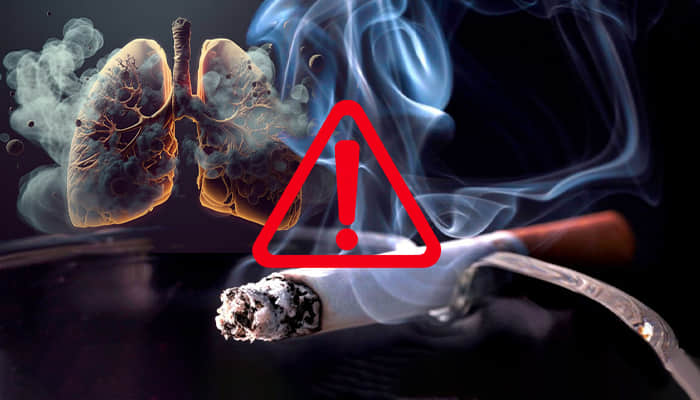
Lung cancer symptoms can be diverse and may resemble other health issues. Understanding these symptoms is crucial, especially if you smoke or have a history of smoking. Here’s a detailed overview of common and less common symptoms, as well as associated conditions.
Common Symptoms

- Coughing: A new cough or worsening of a chronic cough.
- Bloody Sputum (Hemoptysis): If you notice blood in your sputum, seek medical advice promptly.
- Difficulty Breathing: Known as dyspnea or shortness of breath, especially if heart problems are ruled out.
- Frequent Lung Infections: Such as bronchitis or pneumonia.
- Pain: Severe acute or chronic pain, like a stitch in the side or shoulder pain.
- Fatigue: Unusual and persistent tiredness.
- Appetite Loss: A noticeable decrease in appetite.
- Weight Loss: Unexpected weight loss.
If you experience these symptoms persistently, especially if you have a smoking history, consult your doctor.
Less Common Symptoms May Occur

- Voice Changes: Persistent hoarseness or loss of voice (dysphonia), which may also affect swallowing.
- Wheezing: A high-pitched whistling sound due to trachea or bronchial compression.
- Difficulty Swallowing: Caused by compression of the esophagus (dysphagia).
- Pleurisy: Difficulty breathing linked to fluid between the pleura layers.
- Chest Pain: Related to pericarditis, which is fluid around the heart.
- Horner Syndrome: Drooping eyelid and constricted pupil.
- Superior Vena Cava Syndrome: Edema, headache, and visible veins in the chest due to vena cava compression.
- Pancoast Syndrome: Neck pain extending to the arm, which may indicate a tumor at the top of the lung.
Physical manifestations can also develop indirectly outside the lung

These symptoms accompanying cancer but unrelated to the affected organ are grouped under the name “paraneoplastic syndromes”. There are several of them, which can occur at the same time in certain cases, among which:
- Syndrome of Inappropriate Antidiuresis (SIADH): Water retention and low sodium levels.
- Cushing’s Syndrome: High blood pressure, weight gain, and psychological changes due to excessive cortisol.
- Denny-Brown Neuropathy: Balance issues and irregular movements.
- Lambert-Eaton Syndrome: Muscle weakness, especially in arms and legs.
- Hypercalcemia: High calcium levels cause abdominal pain, nausea, and confusion.
- Venous Thrombosis: Pain and swelling from blood clots in veins.
- Digital Clubbing: Enlarged fingertips and nails, indicate respiratory issues.
- Hypertrophic Osteoarthropathy: Painful joint swelling, often with digital clubbing.
Finally, metastases can also reveal the existence of lung cancer. They can cause symptoms depending on the organ concerned, such as:
· Bone Pain: If cancer has spread to the bones.
· Headaches and Neurological Symptoms: Indicating brain metastases, such as nausea, confusion, and seizures.
· Jaundice: Yellowing of the skin and eyes if cancer has spread to the liver.
Lung cancer might also be discovered incidentally during imaging tests for other conditions.
